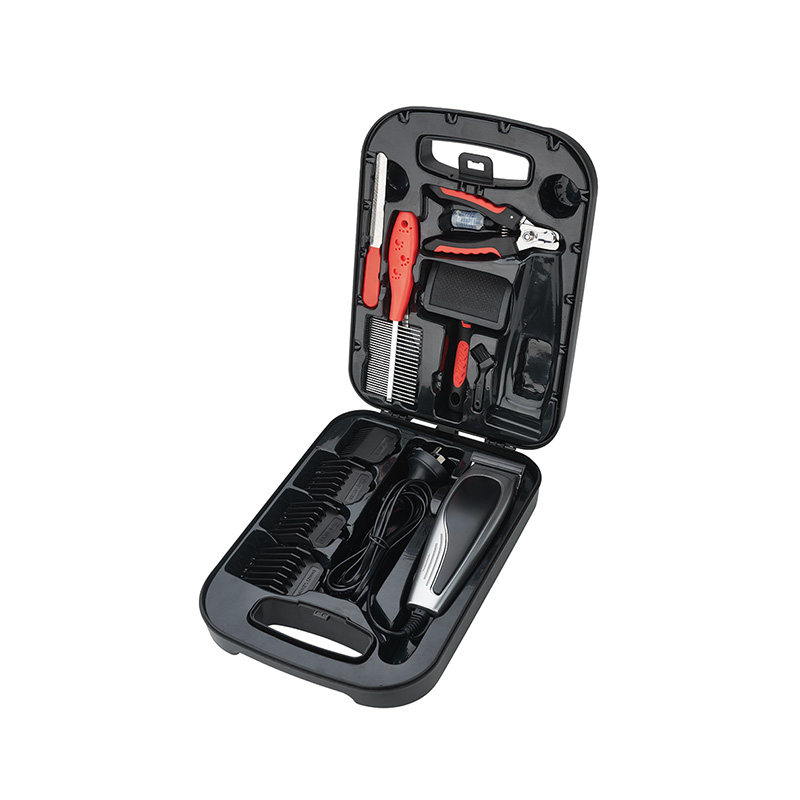 2025.06.25
2025.06.25
 Industry News
Industry News
Understanding Heat Generation During Operation
One of the common concerns among pet owners and groomers when using a Pet Electric Clipper is whether the blade heats up during extended use. As the clipper runs, friction between the blades and continuous motor operation naturally generates heat. If not properly managed, this heat can accumulate and potentially cause discomfort or even minor burns to the pet’s skin, particularly in sensitive areas.

Blade Material Plays a Critical Role
The type of blade material used in a Pet Electric Clipper has a significant impact on heat retention. Stainless steel blades are durable and cost-effective but tend to conduct heat more rapidly. In contrast, ceramic blades are known for staying cooler longer, as they do not retain heat as much as metal-based alternatives. Many high-end clippers use a combination of materials to balance sharpness, durability, and temperature control.
Duration of Use and Heat Build-Up
Heat becomes more noticeable during long grooming sessions or when trimming thick or matted fur that requires the clipper to work harder. The longer the blades remain in motion, the more friction they generate, which can cause warming of the metal surfaces. If the grooming is not paused occasionally, the clipper may become too hot for safe contact with the pet’s skin, especially in delicate areas like the belly, ears, or groin.
Cooling Features and Ventilation Design
Some Pet Electric Clippers are designed with built-in ventilation systems or heat-dissipating technologies to decrease overheating. These systems work by dispersing heat away from the blade area or reducing the friction rate between moving parts. Models that include fan-assisted cooling or ceramic blade options are less likely to reach temperatures that pose a burn risk. When selecting a clipper, it’s wise to look for these features if prolonged use is expected.
Signs That the Blade Is Getting Too Hot
Users should regularly check the blade temperature during use by gently touching it with the back of their hand. If the blade feels hot to the touch, it’s time to turn off the device and let it cool. Many experienced groomers recommend having a second blade set available to swap in during extended grooming, allowing one to cool while the other is used. Another option is using blade coolant sprays designed to instantly reduce blade temperature without interrupting grooming.
Preventing Pet Skin Burns and Discomfort
To avoid burning or irritating a pet’s skin, it is essential to monitor both the clipper’s heat level and the pet’s reactions during grooming. If a pet suddenly pulls away, flinches, or shows signs of distress, it could be a response to an overheated blade. Using guard combs or plastic attachments also adds a layer of protection between the blade and the skin, reducing direct heat contact.
Routine Maintenance Makes a Difference
Keeping the clipper clean and well-oiled reduces friction, which in turn limits heat generation. Dull or dirty surfaces cause faster heating. Proper maintenance, such as cleaning blades after every use and applying a few drops of clipper oil, contributes to both cooler operation and a longer blade life.
Conclusion: Heat Is Manageable with Proper Pet Electric Clipper Use and Maintenance
While it is true that a Pet Electric Clipper blade can become warm during use, the risk of skin burns is when the device is used correctly and not maintained properly. Choosing a model with ceramic or heat-resistant blades, using it in intervals, and performing regular blade care are effective ways to keep temperatures safe. With attentive grooming habits, pet owners can ensure a comfortable and safe experience for their pets.